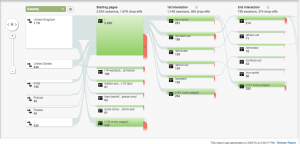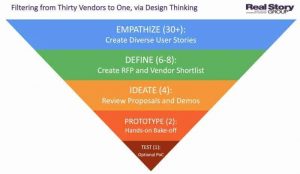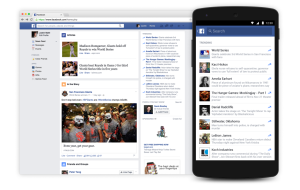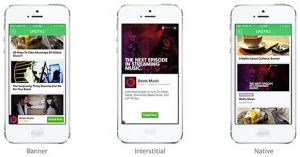
Some consumer products like appliances, televisions and vehicles tend to have longer buying cycles. But there are also products with shorter cycles—like hygiene products, energy drinks and other consumables.
With shorter buying cycles, leads don’t need to be nurtured for a long time before they’re ready to purchase.
So if your customers have a shorter buying cycle, does lead nurturing through email marketing still work? These 10 tips can make lead nurturing work, even when the sales cycle is short.
1. Keep It Brief
Keep your communication concise. If your customers are ready to make quick decisions, that’s a good indicator they don’t want to get bogged down in the details. Use case studies and testimonials to engage your leads, and let them reach out to you.
There is a time and place for lengthy content, but this isn’t one of them.
2. Keep It Simple
In a short buying cycle, the customer is looking to get to the point. Webinars, whitepapers and eBooks all have their place, but when a prospect doesn’t need more than a quick prompt to make a buying decision, these assets can actually slow down or stop the process entirely.
For instance, your prospects are less likely to respond to walls of text and long-form videos because that’s not what they need to make the decision to hit that “buy” button. Keep your messages simple for best results.
3. Make It Visual
Products with shorter buying cycles are typically “sexy” to consumers, which is why they might be more inclined to act faster. Take a cue from social media—use visuals (pictures and quick videos) to appeal to your leads. Another option would be to send them pictures of happy and satisfied customers holding up their new purchase.
Your leads are more likely to respond to an attractive, well-designed product.
4. Make It Easy For Your Leads to Connect With You
Allow them to reply directly to the emails you send (don’t use “noreply” addresses). Provide them with a support email or sales number. Show them how to connect with you on social media. If your product has a short cycle, you don’t need to do all the work. Equip your leads with the tools they need to reach out to you and move down the funnel quickly.
5. Engage With Stories
Feature happy customers in your emails, and tell their stories. Why did they buy, and why are they happy with their purchase? What results did they get? Why would they recommend your product over others? Testimonials let your leads know that they’re in the right place, which can help them move from “interested” to buying very quickly.
Case studies can also be effective tools, so long as you keep them short and engaging.
6. Share Behind-the-Scenes Information or Footage
How is your product made? Is there a unique production process your prospects might want to learn about? Is your manufacturing process environmentally friendly? What’s unique about your company, and what makes it stand out?
Customers love behind-the-scenes information, and there are many ways to present it. But visual media represents the most significant opportunity in this instance.
7. Make the Benefits Clear
Some products, such as hygiene products, aren’t necessarily discussed in public. Although they have a shorter buying cycle, it’s not as though people are going to shout from the rooftops about the new hair-gain shampoo they’ve found on social media.
Regardless of whether or not your product falls under this category, stating the benefits and showing the results can help your prospects make up their minds.
8. Offer a Discount
Think carefully about what would persuade your lead to buy your product. People love coupons, free shipping, discount codes and other promotions. In a short buying cycle, you may need to use several ways of saying “buy now” without actually saying it. An email with a headline like “30% discount code inside” is likely to get a lot of opens and engagement, and help your prospects finalize their purchase decision. Just remember to deliver on your promises.
9. Use Psychological Triggers to Convert
Personal development author and teacher Tony Robbins is famous for pointing out that, inherently, human beings are driven by two things: to move toward pleasure, or to avoid pain. When we make decisions in our lives, it’s usually to achieve either of these goals.
In converting prospects to customers, you might consider: making a limited time offer, highlighting new products, using social proof and other psychological triggers, but don’t be dishonest. For instance, only use scarcity tactics if you have a limited number of products left to sell. Selling on pretense can leave a bad taste in everyone’s mouth (but most of all your customer).
10. Ask For the Sale
Finally, when you’re dealing with people who just want to buy, there’s nothing better than a well-placed call-to-action to get them to act. Being direct in your communication might very well be the best way to encourage more sales for your product.
A cart abandonment sequence would be the ideal place to set up your reminders and calls-to-action, but if you see any other opportunities, be sure to seize them.
Getting Customers to Buy on a Short Buying Cycle
Is lead nurturing relevant in a short buying cycle? It’s fair to say that it takes less nurturing and more exercise in trust-building. If your leads are signing up to receive emails from you, they’re already aware of what you have to offer. You may not need to send more than two or three emails to get a response from them, and ideally, you shouldn’t be taking longer than that, or you might end up losing the sale.
Time is of the essence in a short buying cycle, so either put automated sequences in place for when a new lead signs up for your email list, or have a process to reach out to them quickly.
Digital & Social Articles on Business 2 Community(65)
Report Post







